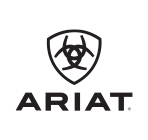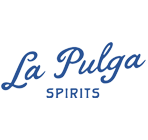The public art program of the arena has been made possible through a gift from the Alice L. Walton Foundation.
As visitors enter either of the building’s two main entrances, they will pass under one of two magnificent glass tile mosaic murals, each commissioned specifically for the facility. Each piece is distinctly different, and celebrates the heritage and diversity of Fort Worth and Texas. The Western-inspired art is a cornerstone of the arena, which is designed by architect David M. Schwarz and is located adjacent to Fort Worth’s Cultural District.
“Los Caballos”

Crowning the south façade is a 12-foot tall by 63-foot wide work by Denver-based William Matthews, one of today’s foremost Western artists, known for his depictions of working cowboys and the American West. Titled “Los Caballos,” the mural commemorates the horse, first brought by the Spanish and now an enduring symbol of the American West, whose introduction to North America transformed the Great Plains and the West for both Native Americans and American pioneers. Set against an untamed landscape, the piece captures the movement of wild horses running among scrub and brush, set against rolling hills, mesas, and a storm-filled sky. Matthews’s work was fabricated in the celebrated female-owned studio Mosaicos Venecianos in Cuernavaca, Mexico, where artisans pieced together more than 600,000 hand-cut glass tiles of 570 different colors to realize this scene with remarkable richness and vibrancy.
Flanking Matthews’s mural are two bas-relief sculptures, further celebrating the significance of the horse in the history of the American West. The two 12-foot tall works, cast in bronze, were conceived from Matthews’s original composition drawings and sculpted by Texas-based artist Buckeye Blake, a member of the Cherokee Nation. On the left is a depiction of an early day cowboy of the American West, skilled and confident. On the opposite side is a Comanche, considered the “Lord of the Plains” and master of the horse culture, brave, and graceful. Both figures, seated on horse-back, serve as welcoming ambassadors to all visitors.
For an executive summary on Los Caballos, click here.
To read A Poet’s Perspective on Los Caballos, click here.
North Facade

The building’s north façade features a soaring triptych measuring 10-feet in height by 108-feet in width portraying the roots and icons of Texas culture. Created by Evergreene Architectural Arts, America’s largest and most respected specialty contractor for architectural arts, the mural was fabricated in Italy using over 600,000 colored glass tiles. It depicts scenes telling the story of Texas, highlighting early settlers and cowhands, set amidst Texas flora, fauna, and more.
Here, diverse pioneering figures present an inclusive and true reflection of Texas culture and history, including a cowgirl, an African-American cowboy, a Vaquero, and a cowboy bearing a Lone Star flag, all mounted on horseback. It was the Vaquero that brought the traditions of horsemanship to the American West and established the foundation for the idea of the cowboy. At the center of the mural is a large-scale, bright, shining star of Texas, surrounded by oil wells representing the Texas oil booms of the 20th Century, and several of the state’s most quintessential symbols of the natural landscape including prickly pear cacti, pecan trees, wildflowers, bluebonnets, daisies, Texas longhorns, and deer.
Designed in an Art Deco style to pay homage to the adjacent, historic and celebrated WPA-era Will Rogers Memorial Coliseum, Dickies Arena’s numerous architectural details depict the culture and flora of Fort Worth, including wildflowers etched in designs and native prairie grasses sculpted in metal inside the building. Designed by renowned American architect David M. Schwarz, the arena is slated to open in October 2019, and host its first rodeo in January 2020.
Since its founding in 1849, Fort Worth, Texas has possessed a powerful synergy rooted in its community pride and western heritage. From early on, the city’s citizens were inspired to invest in quality of life and cultural pursuits, resulting in an extraordinary collection of both public and private art. The city has consistently maintained this dedication to the arts, reflected in multiple world-class museums and architecture. Although each of Fort Worth’s many legacy projects are focused on different missions and visions, they share one common theme: an unparalleled combination of forward-thinking and philanthropic giving focused on community enrichment, with each successive generation expanding the cultural palette of the city. Dickies Arena sits in the city’s Cultural District, alongside the Art Deco-stylized Will Rogers Memorial Center, the Kimbell Art Museum, the Amon Carter Museum of American Art, the Modern Art Museum of Fort Worth, the Fort Worth Museum of Science and History, the National Cowgirl Museum and Hall of Fame, and the Fort Worth Botanic Garden.
For more information about the murals and sculptures, visit this link.
















